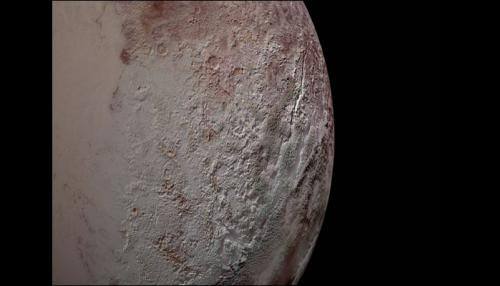- News>
- Space
New Horizons: Origins of Pluto`s giant blades of ice decoded

They are one of the most puzzling feature types on Pluto, and it now appears the blades are related to Pluto`s complex climate and geological history.
New Delhi: Known as the smallest and coldest planet in our solar system, Pluto came into focus in July 2015, through NASA's New Horizons' Pluto flyby.
Outlining the dwarf planet's geology and composition, along with details about the unexpected haze in the planet's atmosphere and its interaction with the solar winds, New Horizons has revolutionised scientists' and the world's understanding of of Pluto.
From the planet's icy volcanoes to the activities of its five moons, the probe has given us plenty to think about.
Among New Horizons' many discoveries, images of strange formations resembling giant knife blades of ice were quite significant, the origins of which remained a mystery.
Now, scientists have turned up a fascinating explanation for this 'bladed terrain': the structures are made almost entirely of methane ice, and likely formed as a specific kind of erosion wore away their surfaces, leaving dramatic crests and sharp divides.
According to NASA, these jagged geological ridges are found at the highest altitudes on Pluto’s surface, near its equator, and can soar many hundreds of feet into the sky – as high as a New York City skyscraper.
They are one of the most puzzling feature types on Pluto, and it now appears the blades are related to Pluto’s complex climate and geological history.
The formation of the bladed terrain begins with methane freezing out of the atmosphere at extreme altitudes on Pluto, in the same way frost freezes on the ground on Earth, or even in your freezer, said Jeffrey Moore, a research scientist at NASA’s Ames Research Center in California’s Silicon Valley and a New Horizons team member.
“When we realized that bladed terrain consists of tall deposits of methane ice, we asked ourselves why it forms all of these ridges, as opposed to just being big blobs of ice on the ground,” said Moore. “It turns out that Pluto undergoes climate variation and sometimes, when Pluto is a little warmer, the methane ice begins to basically ‘evaporate’ away.”
This erosion of Pluto’s bladed terrain indicates that its climate has undergone changes over long periods of time – on a scale of millions of years – that cause this ongoing geological activity. Early climatic conditions allowed methane to freeze out onto high elevation surfaces, but, as time progressed, these conditions changed, causing the ice to “burn off” into a gas, NASA said.
This discovery pretty much establishes the fact that the surface and air of Pluto are apparently far more dynamic than previously thought.
The results have just been published in Icarus, an international journal of planetary science.
Check out the video below:
(Video courtesy: NASA's Ames Research Center)

